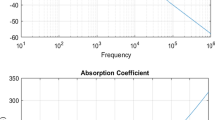Abstract
The concept of communication using acoustic media of underwater sensor networks is important in pollution monitoring, oceanographic data collection and meet future development needs. To improve communication security, it is proposed co-communication of underwater sensor networks with quantum and acoustic communication capabilities by taking advantage of quantum communication and entanglement correlation nonlocality. Between the surface base station and autonomous underwater vehicle, it shares quantum keys by quantum communication and classical communication. Between autonomous underwater vehicle and underwater nodes, it employs symmetric cryptography without causing much encryption and decryption overhead to relay information and correct received information with low-complex on current technique level. In addition, it particularly analyzes the security and throughput efficiency.

Similar content being viewed by others
References
Li, C., Xu, Y., Xu, C., An, Z., Diao, B., & Li, X. (2016). DTMAC: A delay tolerant MAC protocol for underwater wireless sensor networks. IEEE Sensors Journal, 16(11), 4137–4146.
Akyildiz, I. F., Pompili, D., & Melodia, T. (2005). Underwater acoustic sensor networks: Research challenges. Ad Hoc Networks, 65(3), 257–279.
Li, H., He, Y., Cheng, X., Zhu, H., & Sun, L. M. (2015). Security and privacy in localization for underwater sensor networks. IEEE Communications Magazine, 53(11), 56–62.
Bennett, C. H., Brassard, G., Crpeau, C., Jozsa, R., Peres, A., & Wootters, W. K. (1993). Teleporting an unknown quantum state via dual classical and Einstein–Podolsky–Rosen channels. Physical Review Letters, 70(13), 1895–1899.
Ekert, A. K. (1991). Quantum cryptography based on Bell’s theorem. Physical Review Letters, 67(6), 661–663.
Bennett, C. H., Brassard, G., & Mermin, N. D. (1992). Quantum cryptography without Bell’s theorem. Physical Review Letters, 68(5), 557–559.
Patel, K. A., Dynes, J. F., Choi, I., Sharpe, A. W., Dixon, A. R., Yuan, Z. L., et al. (2012). Coexistence of high-bit-rate quantum key distribution and data on optical fiber. Physical Review X, 12(2), 041010.
Beige, A., Englert, B. G., & Kurtsiefer, C. T. (2002). Secure communication with a publicly known key. Acta Physica Polonica A, 101(3), 357–368.
Deng, F. G., Long, G. L., & Liu, X. S. (2003). Two-step quantum direct communication protocol using the Einstein–Podolsky–Rosen pair block. Physical Review A, 64(4), 042317.
Wang, K., Yu, X. T., Lu, S. L., & Gong, Y. X. (2014). Quantum wireless multihop communication based on arbitrary Bell pairs and teleportation. Physical Review A, 89(2), 022329.
Aguilar, E. A., Ramanathan, R., Kofler, J., & Pawowsk, M. (2016). Completely device-independent quantum key distribution. Physical Review A, 92(2), 022305.
Ewert, F., Bergmann, M., & van Loock, P. (2016). Ultrafast long-distance quantum communication with static linear optics. Physical Review A, 92(2), 022305.
Li, J., Li, N., Li, L. L., & Wang, T. (2016). One step quantum key distribution based on EPR entanglement. Scientific Reports, 6(28767), 1.
Domingo, M. C. (2011). Securing underwater wireless communication networks. IEEE Wireless Communications, 18(1), 22–28.
Chao, C. M., Wang, Y. Z., & Lu, M. W. (2013). Multiple-rendezvous multichannel MAC protocol design for underwater sensor networks. IEEE Transactions on Systems, Man, and Cybernetics, 43(1), 128–138.
Han, G., Jiang, J., Sun, N., & Shu, L. (2015). Secure communication for underwater acoustic sensor networks. IEEE Communications Magazine, 53(8), 54–60.
Coutinho, R. W. L., Boukerche, A., Vieira, L. F. M., & Loureiro, A. A. F. (2016). Geographic and opportunistic routing for underwater sensor networks. IEEE Transactions on Computers, 65(2), 548–561.
Huang, Y., Zhou, S., Shi, Z., & Lai, L. (2016). Channel frequency response-based secret key generation in underwater acoustic systems. IEEE Transactions on Wireless Communications, 15(9), 5875–5888.
Acknowledgements
This research was supported by shandong Province Higher Educational Science and Technology Program (No.J18KZ012), and National Natural Science Foundation of China (Nos. 11975132, 61772295), and Shandong Provincial Natural Science Foundation, China (No., ZR2019YQ01).
Author information
Authors and Affiliations
Corresponding author
Additional information
Publisher's Note
Springer Nature remains neutral with regard to jurisdictional claims in published maps and institutional affiliations.
Rights and permissions
About this article
Cite this article
Ma, H., Teng, J., Hu, T. et al. Co-communication Protocol of Underwater Sensor Networks with Quantum and Acoustic Communication Capabilities. Wireless Pers Commun 113, 337–347 (2020). https://doi.org/10.1007/s11277-020-07192-7
Published:
Issue Date:
DOI: https://doi.org/10.1007/s11277-020-07192-7




